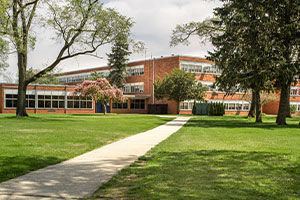
1115 North 23rd Avenue
Melrose Park, IL. 60160
708-345-3632
Melrose Park, IL has nearby treatment options including: 6 low cost treatment centers, 0 inpatient rehab, 3 drug rehabs that take PPO insurance like BCBS, 0 detox center, 4 outpatient treatment programs.

For help finding an addiction treatment center, Call us!
All calls are 100% confidential and free
1-877-882-9275



Like other alcohol and drug rehab centers, PCC Community Wellness Center is committed to long term recovery for alcohol and drug abusers living in the Melrose Park, Illinois area. As such, this alcohol and drug rehab facility has been providing services like vocational rehabilitation services, individual psychotherapy, contingency management/motivational incentive, cognitive/behavior therapy, substance abuse counseling approach, matrix model and more.
In Addition, PCC Community Wellness Center knows that it is important that its patients receive individualized care to ensure that they get effective results. This is why it specializes in various programs such as child care for clients children, substance abuse education, persons with post-traumatic stress disorder, legal advocacy, persons who have experienced sexual abuse, transgender or (LGBT) clients and many other modes of treatment that you can find listed in the following section. Each of the services that the organization offers are also available in different settings - short term treatment centers, inpatient treatment programs, outpatient hospital programs, long term drug rehab facilities, outpatient detox programs and more.
This rehab also has aftercare programs and other treatment methods that can help you find permanent sobriety both in the short and in the long term. Finally, PCC Community Wellness Center accepts cash or self-payment, private insurance, military insurance, payment assistance, county or local government funds, other state funds and others.
Yes, there are substance abuse rehabilitation facilities that cater specifically to the LGBTQ+ (lesbian, gay, bisexual, transgender, queer, and others) community. These specialized treatment centers recognize the unique challenges and stressors that LGBTQ+ individuals may face, which can contribute to and complicate recovery from substance use disorders.
These specialized LGBTQ+ rehabs offer a variety of services, including:
It's worth noting that while some individuals may prefer a LGBTQ+-specific rehab, others may feel comfortable in a more general rehab facility that offers LGBTQ+-inclusive services and staff training. The best choice depends on the individual's personal preferences and needs.
Fentanyl is a synthetic opioid pain reliever that is 50 to 100 times more potent than morphine. It's typically used to treat severe pain, especially after surgery, or to manage pain in individuals with chronic illnesses who have developed a tolerance to other opioids.
When used under medical supervision, fentanyl can effectively relieve pain. However, when used illicitly or without a prescription, it can have severe, and even fatal, effects. Here's what fentanyl can do to a person:
Physical Effects: In the short term, fentanyl can induce feelings of relaxation, euphoria, and decreased perception of pain. However, it also slows breathing and can lead to unconsciousness or death from respiratory failure, particularly in high doses or when combined with other substances that depress the central nervous system.
Dependency and Addiction: Fentanyl is highly addictive. Regular use can lead to physical dependence, where the body requires the drug to function normally, and psychological addiction, where a person feels a compulsive need to use the drug despite its harmful consequences.
Overdose Risk: Due to its potency, the risk of overdose with fentanyl is high, especially if a person mistakenly believes they're taking a less potent opioid, as illicit fentanyl is often mixed with other drugs. Overdose can lead to severe respiratory depression, unconsciousness, and death.
Withdrawal: Once a person becomes dependent on fentanyl, stopping its use can result in withdrawal symptoms. These can include muscle and bone pain, sleep problems, diarrhea, vomiting, cold flashes, and uncontrollable leg movements.
Long-Term Health Effects: Chronic fentanyl use can lead to an array of health problems, including severe constipation, increased sensitivity to pain, confusion, depression, and increased risk of infections due to needle sharing (if injected).
Due to its potency and high risk of overdose, non-medical use of fentanyl is extremely dangerous. If you or someone you know is struggling with fentanyl or other opioid use, it's crucial to seek professional help immediately.
Yes, racial inequities do exist in the treatment of addictive disorders, reflecting systemic disparities that pervade many aspects of healthcare. These inequities can occur across multiple dimensions, including access to treatment, quality of care, and outcomes. Here are some ways in which these inequities manifest:
National Non Profit Helpline - 1-877-882-9275
Our National Non Profit Helpline is a 24/7, 365-day-a-year treatment referral and information service for individuals and families faced with mental and/or substance use disorders.
All calls are strictly confidential
Our service provides referrals to licensed treatment facilities, support groups, and community-based organizations. You don't have to struggle alone with addiction. Help is just a phone call away. Call 1-877-882-9275 now to get the help you need and deserve.
© Copyright 1998 - 2022 All Rights Reserved. Content is protected under copyright laws, do not use content without written permission.